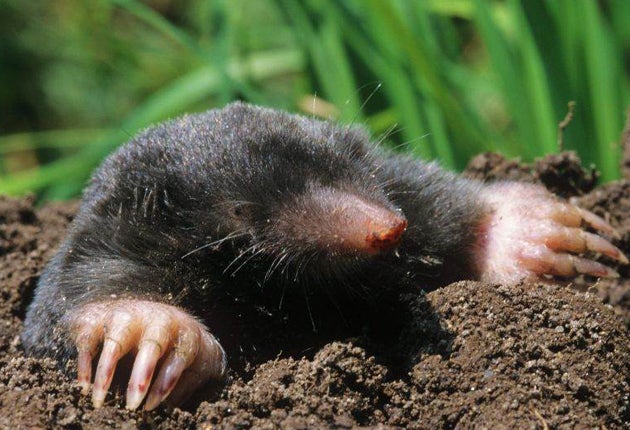Mole numbers soar as strychnine ban checks pest control
Traditional trappers busier than ever after dramatic rise in calls for help from farmers and gardeners

Mole populations are soaring across Britain and the explosion in numbers has left traditional molecatchers struggling to keep up. Experts say exact numbers for Britain's moles are difficult to calculate but the most recent estimate is 33 million. However, pest controllers say the number could be as high as 40 million.
Molecatchers are reporting triple the number of call-outs in the past two years, as despairing gardeners try to get rid of the pests.
The increase is being attributed to the combined effects of a ban on the use of strychnine, a popular DIY extermination method, and the foot and mouth epidemic, which prevented pest controllers and molecatchers from travelling to rural areas for months and left mole populations free to expand unchecked.
The British Traditional Molecatchers Register, which represents 300 mole trappers, reports rocketing enquiries. The number of people using its online directory rose 50 per cent in the past year, with 1,500 users a week. Brian Alderton, who established the register in 2007, said: "Ever since the banning of strychnine, and foot and mouth, moles have been a growing problem. In the past two years we've seen a massive increase in calls for help."
Rory Collins, a molecatcher from Northumberland, has been inundated with requests from farmers and gardeners. "It's seven days a week – it's been completely crazy. In the past two years my work has tripled."
Bernard Hogarth, 57, from Sand Hutton near York, called in a trapper when a paddock he owns was invaded. "I levelled the ground and planted the grass and then, all of a sudden, these little eruptions started to appear. And soon they weren't so little. Now there are around 25 molehills and some of them are a foot high."
Farmer Roy Lunn, 68, from Bardsey, near Leeds, West Yorkshire, said moles were a threat to his farm. "The fields are a mess. It's not good for farm machinery and all the soil they throw up ruins good hay," he said. "We've always had moles but this year has been different; our molecatcher got 85 in one go."
Before the 2006 ban on strychnine the Government estimates more than 3,000 farmers and landowners would have poisoned the moles themselves. Now they must choose between expensive pest control, traditional methods, or leaving the moles to it.
David Wembridge, of the People's Trust for Endangered Species, said we need to stop seeing moles as pests. "I know gardeners may be upset if their lawns are disturbed but moles can be useful too.
"They are insectivores and their diet could include such common nasties as cockchafer larvae and wire worms which can do an awful lot of damage to plants."
Join our commenting forum
Join thought-provoking conversations, follow other Independent readers and see their replies
Comments
Bookmark popover
Removed from bookmarks